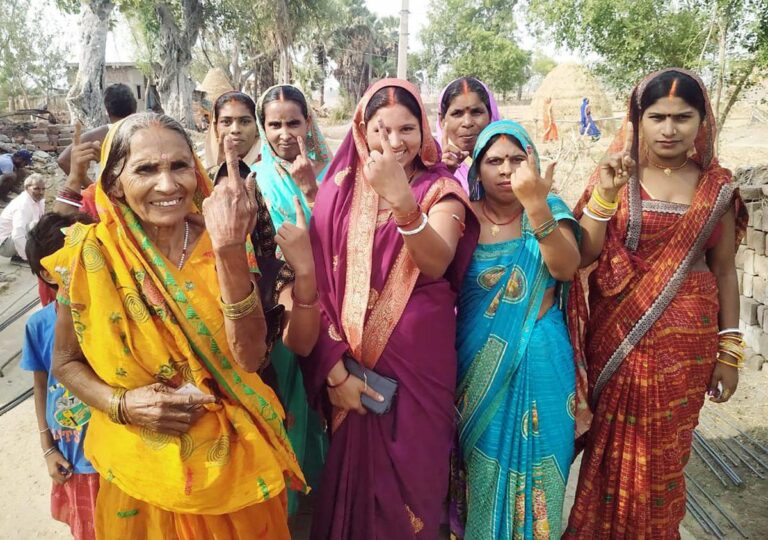The Bharatiya Janata Party (BJP) lost the election in Faizabad Lok Sabha constituency, where the Ram temple is located. As this was the first election since the construction of the Ram temple in Ayodhya, there was speculation that the party might gain more seats in this constituency. However, the verdict came as a surprise. Not only did the BJP lose, but Samajwadi Party (SP) Dalit candidate Awadhesh Prasad defeated BJP’s Thakur candidate Lal Singh in this unreserved seat. This is one of the few instances in Indian electoral history where a Dalit candidate has won a Lok Sabha constituency in an unreserved seat. This raises the question of how Dalits vote in the 2024 Lok Sabha elections.
Congressional victory
A look at the performance of political parties in the parliamentary constituencies reserved for Scheduled Castes (SCs) (a total of 84) shows that the Indian National Congress won 20 such seats while the Indian National Congress and its allies won 33 seats. Since the Indian National Congress won only six SC reserved seats in 2019, its performance in the SC reserved seats in 2024 was a considerable improvement for the party. The Indian National Congress not only improved its performance in terms of number of seats but also vote share, increasing its vote share from 16.7% in the 2019 Lok Sabha elections to 20.8% in the 2024 elections.

On the other hand, the BJP suffered a setback in the SC reserved seats: it managed to win just 29 seats in 2024 as against 46 in 2019. Overall, the National Democratic Alliance (NDA) won 39 SC reserved seats in 2024, which is 15 less than in the 2019 Lok Sabha elections (Table 1).
Table 1 | This table shows party- and coalition-wise performance in Dalit reserved seats in the last three Lok Sabha elections.
Click to remove AMP mode
Political parties’ electoral fortunes
In many states, the choice of Dalit voters may have changed the electoral fortunes of political parties. More specifically, it may have played some significant role in shaping the electoral outcomes of the NDA-INDIA coalition in many states. Though Dalits did not vote in the same way in all states, data shows that wherever Dalit voters supported the NDA or INDIA coalition, that coalition won more seats. For example, Uttar Pradesh and Bihar have similar nature of political contestation. The INDIA coalition performed well in Uttar Pradesh but not to the same extent in Bihar. According to the results of National Election Survey (NES) 2024, Dalit voters supported the INDIA coalition candidate in Uttar Pradesh but not to the same extent in Bihar.
click Subscribe to our Data Newsletter
The NES findings were similar in Maharashtra and Madhya Pradesh, where Dalits were more likely to vote for India Block candidates than NDA candidates, but not in Madhya Pradesh.
In Rajasthan, 46% of Dalits voted for the Indian National Congress while only 37% voted for the BJP candidate (Table 2). In the state, the BJP won all 25 seats in both the 2014 and 2019 Lok Sabha elections but lost 10 seats in the 2024 elections.
Table 2 | This graph shows the Dalit vote turnout in the 2024 Lok Sabha elections. Figures are in percentage.
In Gujarat, 57% of Dalit voters voted for the BJP and only 43% for the Indian National Congress. The BJP won 25 of the 26 seats in the Lower House of the National Assembly.
Dalit voters supported the BJP in Haryana, winning five of the state’s ten seats. In the 2019 elections, the Bharatiya Janata Party won all ten of Haryana’s Lok Sabha seats.
The BJP won 20 of the 21 Lok Sabha seats and 78 of the 147 Assembly seats in Odisha. 46% of Dalit voters in the state voted for the BJP, 40% for the Biju Janata Dal (BJD), and 15% for the Indian National Congress/United India.
In neighbouring West Bengal, the Trinamool Congress maintained its lead, winning 29 of the 42 seats in the Lower House of the Rajya Sabha, but 45% of Dalits there voted for the BJP and a smaller number (41%) for the Trinamool Party, and the Trinamool Party managed to mobilise voters from various other social communities.
In the South
In Andhra Pradesh, Dalit votes were split almost evenly between the Telugu Desam Party and its allies, and the YSR Congress.
In Telangana, 46% of Dalits voted for the Bharatiya Janata Party (BJP) and the Bharatiya Janata Party (BNC), 23% for the BJP and the BNC, and 31% for the BRS.
The Indian National Congress’s strong performance in Karnataka was largely due to Dalit voters voting for the Indian National Congress (66% voted for the Indian National Congress).
The BJP’s strong performance in Assam is due to its continued support from Dalits. According to NES 2024 survey data, 70% of Dalits in Assam voted for the BJP/NDA, while only 12% voted for the Indian National Congress-Alliance.
While the data shows that Dalit votes have a significant impact on the victories and good performance of political parties in various states, it does not indicate that this may be the only reason for the victories of political parties in these states.
Sanjay Kumar is professor and co-director of Loknity CSDS, Jyoti Mishra is a researcher at Loknity CSDS and Vibha Atri is a researcher at Loknity CSD.S
Source: National Election Survey (NES) 2024 conducted by the Data Unit of the Center for Research on Developing Societies and Lokniti-CSDS
Also read: The precarity of equidistance in polarized political systems: The data
This is a premium article available only to subscribers. To read over 250 premium articles every month,
You’ve reached your limit for free articles. Support quality journalism.
You’ve reached your limit for free articles. Support quality journalism.
You have read {{data.cm.views}} from {{data.cm.maxViews}} Free articles.
This is the last free article.

